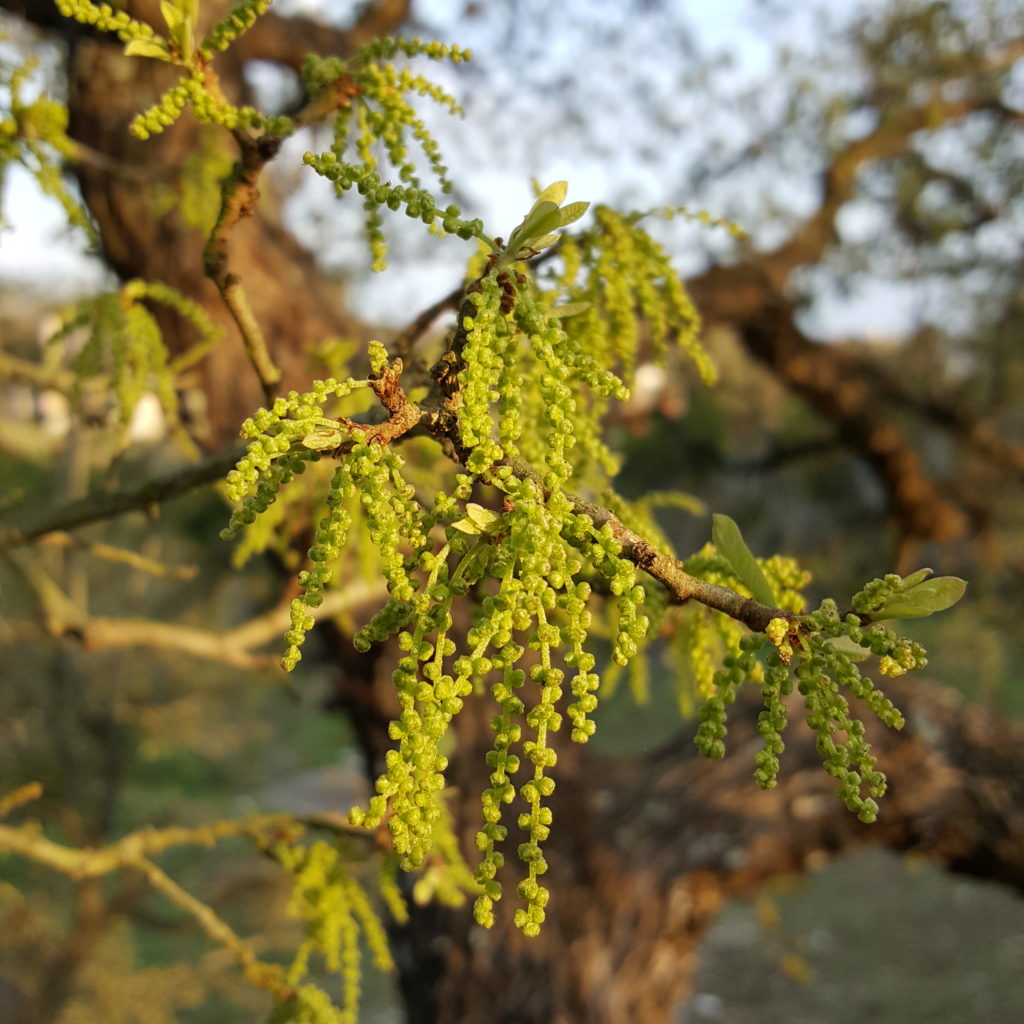Live Oak and the Spring Allergy Season are right around the corner.
So, you’ve survived the dreaded Mountain Cedar allergy season and you’re thinking, “I’m in the clear and everything is looking up”. Not so fast. There’s no rest for the weary allergy sufferers of Central and South Texas this year. Our unseasonably warm temperatures are getting spring off to an early start, and in a rare February switch, our pollen counts are actually showing higher levels of spring tree pollens than mountain cedar pollen right now. The spring tree season typically runs from mid-March through late May. But this February we are already beginning to see Live Oak and other tree pollen showing up in the pollen reports.
Live Oak pollen brings the most misery.
If you suffer from spring allergies, Live Oak is the pollen which gives the most people trouble. The yellow-green oak pollen coats everything from your car to the sidewalk and even the grass. And the heavy pollen can linger in the air for weeks depending on whether or not we receive any rain. The resulting allergy and asthma symptoms can be miserable. Classic spring “hay fever” symptoms can include nasal congestion and drainage, sneezing, itching and eye irritation. And if you are unlucky enough to also have asthma, you may have to deal with a dry, hacking cough, shortness of breath, chest tightness, or even wheezing.
To survive the spring allergy season, keep in mind some of the following general guidelines for staying healthy:
Limit your outdoor exposure as much as possible.
If you regularly exercise outside, try temporarily switching to an indoor setting. Exercise indoors at a gym or walk at the mall. Got to take the kids to soccer or baseball? Try watching practice from the comfort and protection of your car. Keep your windows closed and the air-conditioning running; not only in the house, but when you’re driving in the car as well. And if you do have to be outside for an extended period of time, wear a filter mask.
Be sure to wash after every outdoor activity.
All that pollen which is collecting in your nose and lungs is also collecting on your hair and clothing. Taking a shower and changing into clean clothing after outdoor activities will reduce your exposure to the pollen. And definitely wash your hair before going to bed; pollen on the pillow means pollen exposure all night.
Begin taking your preventative medications now.
Preventative nasal steroid sprays, which are now available over-the-counter, are best when started at least two weeks before the spring allergy season starts and should be taken every day until the season ends Prescription preventative medications, such as Montelukast, should also be taken on a daily basis during the season.
Have antihistamines and eye drops are readily available.
Non-sedating antihistamines, as well as many allergy eye drops, are now available without a prescription. Although they are designed to be used “as-needed”, they are generally safe for daily use through the season. If you are unsure about which medications to take, check with your pharmacist.
Allergy immunotherapy can help build the body’s tolerance.
When all your avoidance efforts and the over-the-counter medications don’t do the trick, then it’s time to call your allergist. A board-certified allergist can prescribe more intensive remedies to bring your current symptoms under control and develop a preventative plan using allergen immunotherapy that can help you avoid the misery of seasonal allergies in the future. Rather than reducing symptoms after they have started, allergen immunotherapy (“allergy shots” or “allergy drops”) helps your body develop resistance to the pollen particles so that your symptoms are significantly reduced and much less severe. Allergy injections are the traditional immunotherapy treatment and are widely recognized as being quite effective. Oral allergy drops are now available and offer a convenient, safe and effective option for patients who don’t want to take allergy injections in the doctor’s office. Regardless of whether you choose shots or drops, an individualized extract prescription is prepared for each patient based on the results of specific allergy testing. Patients need to begin immunotherapy prior to the onset of seasonal allergies, but once maintenance immunotherapy is achieved, the allergy season will be much less problematic for the allergy sufferer.
